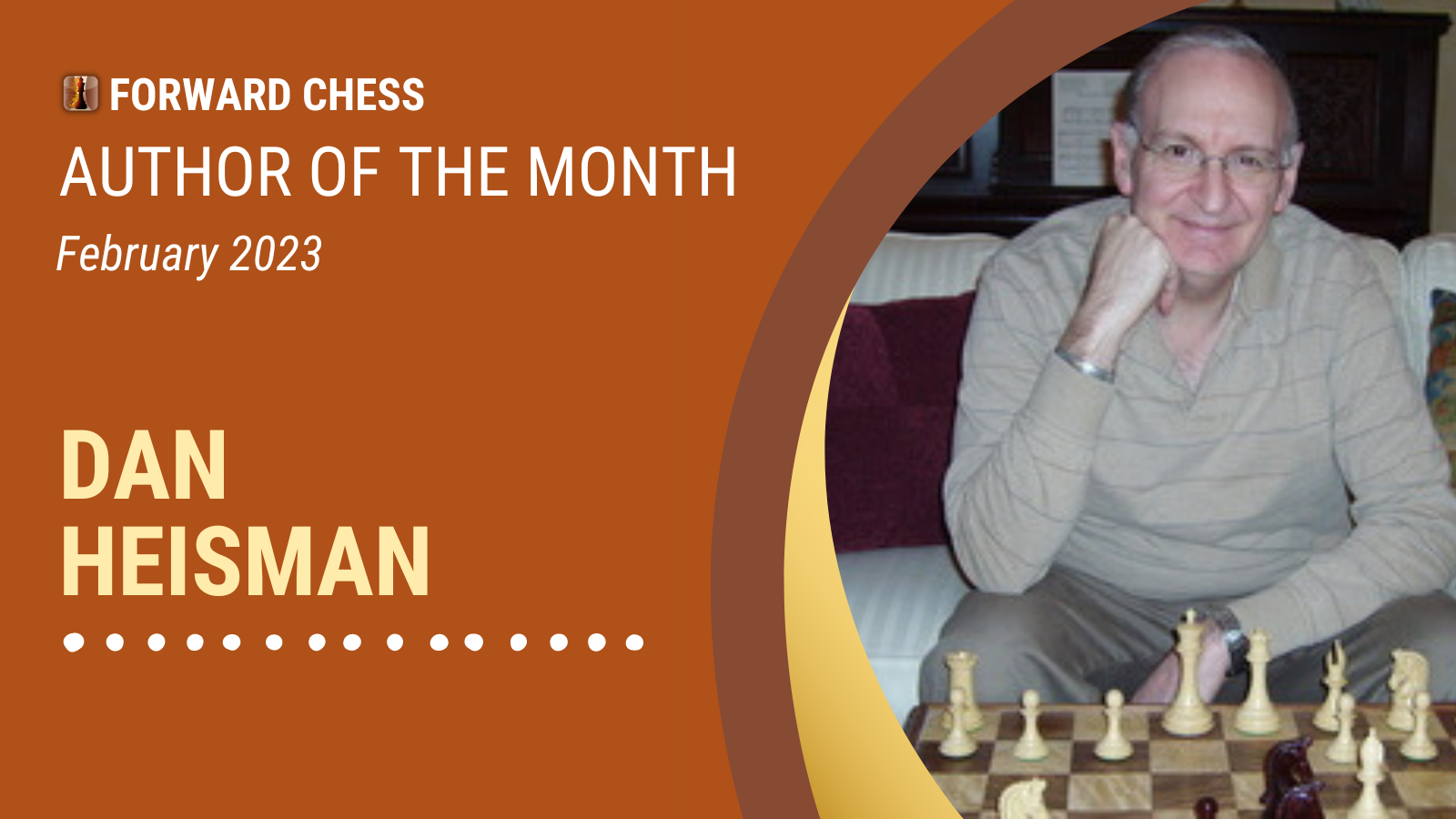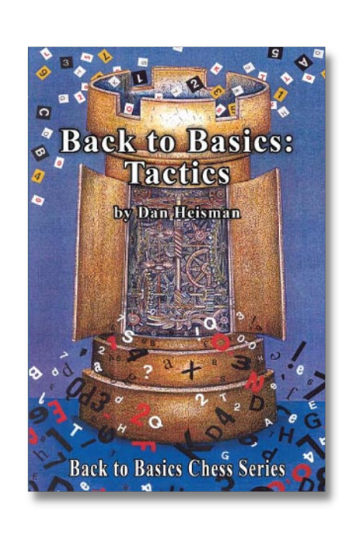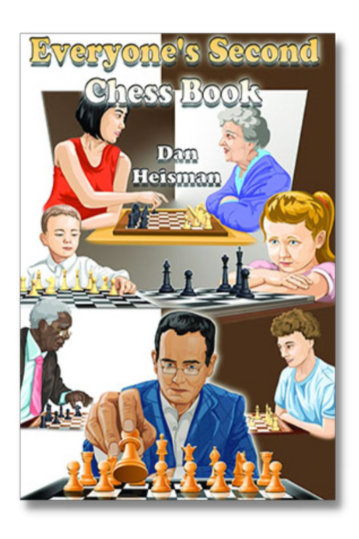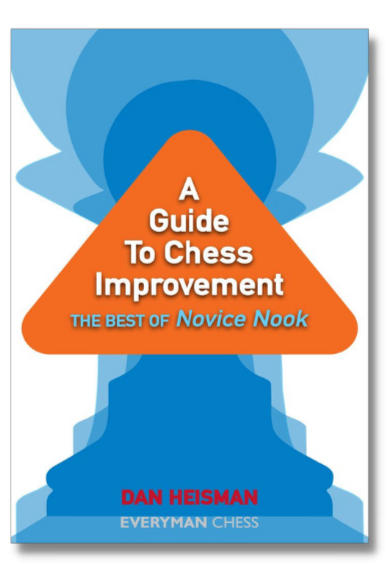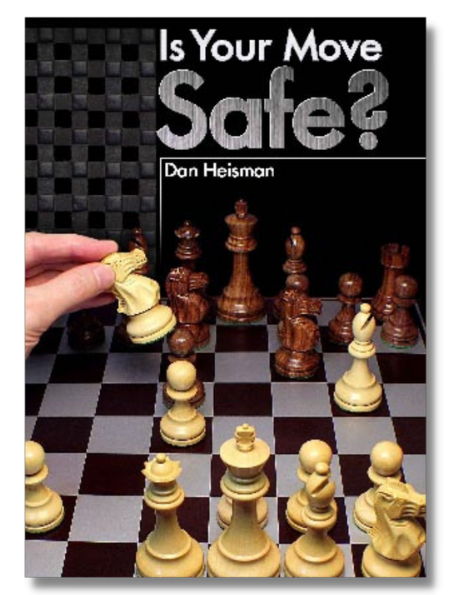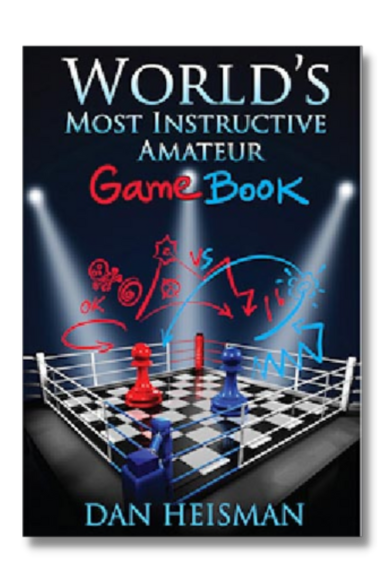I am honored to be Forward Chess’ Coach of the month! Thanks to all who made this possible.
I am also happy to say that Forward Chess is now offering eight (!) of my books for reading inside their app:
- The World’s Most Instructive Amateur Game Book
- Everyone’s Second Chess Book
- Back to Basics: Tactics
- A Guide to Chess Improvement
- Elements of Positional Evaluation
- Is Your Move Safe?
- Looking for Trouble
- The Improving Annotator
One of my goals in writing chess books is to cover unique subjects that you can’t find easily in other books or media. The one exception is Back to Basics: Tactics, which I was asked to write as part of a series for Russell Enterprises. But even Back to Basics: Tactics has a unique aspect: the first chapter has an emphasis on the tactic I call Counting, which is determining whether any sequence of captures – on one or multiple squares – will lose or gain material. Counting exchanges on one square is usually relatively easy, given the average values of the exchanged pieces. However, Counting that involves captures on multiple squares can be so complicated with many permutations that it sometimes requires engine analysis to ensure the correct determination. I also included other material not normally found in basic tactics books like the chapter “Is There a Win?” where every position looks like there might be a tactic, but only about half actually do. In that sense the positions in that chapter are similar to actual games, where you don’t know if your position has a tactic even if there are “seeds” of tactical play indicating a tactic might be possible.
The oldest of my books is Elements of Positional Evaluation. Elements’ subtitle tells the story of what the book is about: How the Pieces Get Their Power. The contents are based on material from chess courses I had taught at work and adult evening school. Forward Chess sells the greatly expanded fourth edition; the first three editions did not have all the examples and was primarily prose theory. I wrote Elements on a typewriter almost 50(!) years ago when I was an unknown expert. For that reason, I could not get it published, and the manuscript languished on a shelf in my closet for about 16 years. Then I heard about a small publisher in Western Pennsylvania, Chess Enterprises, run by Bob Dudley. One day I pulled on Bob’s sleeve and told him he was publishing books from all over, but we had an unpublished author right here in Pennsylvania, me. That first edition of Elements became a “cult classic”
A few years later Bob agreed to publish my second book, consisting of original annotations of my games as an improving player, which I called, not surprisingly, The Improving Annotator. To show you how much I wanted to get it published, I agreed to provide the manuscript to the publisher for no remuneration – how many authors can claim that? Today Russell Enterprises publishes the greatly expanded fourth edition of Elements, while Mongoose Press publishes the second edition of The Improving Annotator.
As a full-time chess instructor, I noticed that amateur players, not unexpectedly, made similar thought process mistakes. Many of these mistakes did not have names, so as I ran into these same problems repeatedly, I started to categorize and write about them. I also had read that the psychological idea of learning by “chunking” information was not only applicable to critical educational subjects like reading, but could equally be applied to chess. From ideas like these, I was able to write a series of essay-like chapters on learning chess and the typical problems involved, and that book became Everyone’s Second Chess Book. The idea for the book was “suppose someone has learned the rules of chess and knows basics like how to checkmate – is there some sort of guide that might help him in the next step of his/her journey?” So I included other issues, like what rules are most important to know, and even a section on chess etiquette.
After writing some columns about improvement for the online magazine Chess Café, owner Hanon Russell asked me to write a regular column for improving adults. This, of course, was right up my alley! Hanon decided to call it “Novice Nook”, which is somewhat a misnomer because it would eventually include material that could help anyone improve, not just novices! For about 12 years I wrote the column monthly and it won the Chess Journalists of America award for Best Instruction seven times. It’s some of my best work. About two-thirds of the way through the series, the large publisher Everyman agreed to publish an updated version of the best of my Novice Nook columns, and this became A Guide to Chess Improvement; the subtitle was the best of Novice Nook. Chess Café has gone on to become private, but I have been able to cover similar material in my Youtube channel, which has also won awards from the Chess Journalists of America.
One day a friend, Dr. Steven Rolfe, suggested I write a book about dealing with threats (he meant threats made by the opponent’s previous move). I agreed on the condition that Steve approve the contents, which he did. I then scoured my own games, teaching material, student’s games, and famous games for instructive threats. For each problem I asked the reader to identify all the threats from the previous move and then suggest what they could do with their move to best deal with these threats. Because the material ranged from easy to fiendishly difficult, I used an asterisk system to identify how difficult the particular problem was. I came up with the catchy title Looking for Trouble.
Looking for Trouble filled a void in chess literature about identifying and dealing with threats from the opponent’s previous move. But what about the more common problem amateurs have about determining if their own moves were safe? That would be a good companion volume so, many years after Looking for Trouble was written, I wrote another puzzle book, this time discussing the crucial issue of determining if a player’s own move was safe. This had the not-so-surprising title of Is Your Move Safe?
Before I did Youtube videos, I did hundreds of videos for the Internet Chess Club (ICC). Many of these videos were instructive amateur games, which I understandably culled from my students’ play (anonymously, of course!). It only seemed natural then, that I could write yet another book on instruction based on similar material. This turned out to be The World’s Most Instructive Amateur Game Book, and I’m very proud of it; I think it’s one of my best. Not surprisingly, one or two of the games in this book were played by my student, radio personality Howard Stern! Of course, Howard’s play is also protected by anonymity – all the games are just labeled amateur vs amateur. I recommend The World’s Most Instructive Amateur Game Book to all of my students!

Dan Heisman attended Caltech and Penn State, receiving a Master’s degree in Engineering Science. Mr. Heisman holds the titles of National Master from the US Chess Federation (USCF) and Candidate Master from FIDE, the international chess federation. He was also a long-time USCF Senior Tournament Director and organizer.
Mr. Heisman’s Novice Nook column at Chess Café won the award for Outstanding Column in any Media three times and has been selected six times for Best Instruction. In 2010 the Chess Journalists of America voted him as Chess Journalist of the Year.
Dan Heisman can be contacted via his informative website, www.danheisman.com.
- Rock Solid Chess: Volume 2 - February 21, 2024
- Unsung Heroes of Chess - February 19, 2024
- Build Up Your Chess: The Fundamentals - February 7, 2024
